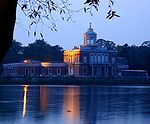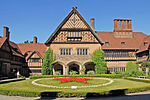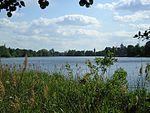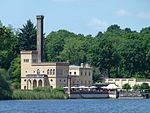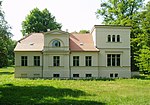New Garden, Potsdam
ClassicismGeography of PotsdamParks in GermanyProtected areas of BrandenburgTourist attractions in Potsdam ... and 1 more
World Heritage Sites in Germany

The New Garden (German: Neuer Garten) in Potsdam is a park of 102.5 hectares located southwest of Berlin, Germany, in northern Potsdam and bordering on the lakes Heiliger See and Jungfernsee. Starting in 1787, Frederick William II of Prussia (1744-1797) arranged to have a new garden laid out on this site, and it came to be known by this rather prosaic name. The New Garden is one of the ensembles comprising the UNESCO World Heritage Site "Palaces and Parks of Potsdam and Berlin," a status awarded in 1990.
Excerpt from the Wikipedia article New Garden, Potsdam (License: CC BY-SA 3.0, Authors, Images).New Garden, Potsdam
Ökonomieweg, Potsdam Nauener Vorstadt
Geographical coordinates (GPS) Address Nearby Places Show on map
Geographical coordinates (GPS)
| Latitude | Longitude |
|---|---|
| N 52.415555555556 ° | E 13.069444444444 ° |
Address
Eiskeller "Pyramide"
Ökonomieweg
14469 Potsdam, Nauener Vorstadt
Brandenburg, Germany
Open on Google Maps
